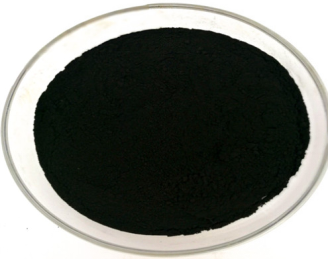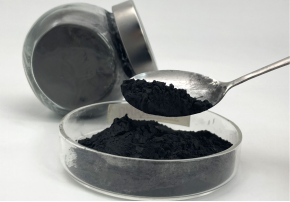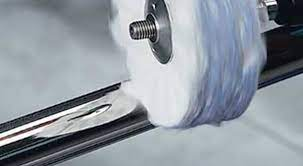
TR-202 Zinc Butyl Octyl Primary Alkyl Dithiophosphate

TR-EPC02 Ethylene-Propylene Copolymer

Lithium 12-Hydroxystearate Lithium Grease Lithium Based Grease

Graphene Best Oil Additive Engine Oil additive

Graphite Powder Graphite Lubricant Dry Graphite Lubricant

MoS2 Friction Modifier Molybdenum Disulfide
Nanodiamond is a material composed of nanometer-sized diamond crystals. It is a nanomaterial with unique properties and broad application potential.
The manufacture, especially the application, of nanodiamonds has been a hot research topic among scientists from various countries in recent years.

Nanodiamond was developed more than 30 years ago, but its application was limited to abrasives such as polycrystals and polishing agents. With the deepening of people's understanding of the properties of nanodiamonds, nanodiamonds have been used in lubricants. Metal coatings, magnetic recording systems, medicine, and other fields have begun to be applied, and the application fields are still expanding.
According to the information published by Russian nanodiamond expert Valery Yurievich Dolmatov, a brief introduction to the application of nanodiamonds is given:
Adding nanodiamonds to lubricating oil can extend the working life of engines and transmission devices, save fuel and oil, reduce friction torque by 20 to 40%, and reduce friction surface wear by 30 to 40%. After plating, the service life of the aspects is increased by 1 to 9 times. The thickness of the coating can be decreased by 1 to 2 times. Standard electroplating equipment is used during electroplating.
A nanodiamond is composed of several nanometer-sized diamond particles, usually in a spherical or spherical-like shape. They have a crystal structure similar to macroscopic diamonds, in which carbon atoms are sp^3 hybridized to form a tetrahedral structure.
Strength and hardness
Nanodiamond has excellent mechanical properties, high strength and extreme hardness. It is one of the hardest materials known, harder than traditional micron-sized diamond.

Nanodiamond polishing fluid
Nanodiamond polishing fluid is widely used in semiconductor silicon wafer polishing, computer hard disk substrate, computer head polishing, precision ceramics, artificial crystals, cemented carbide, gem polishing and other fields due to its excellent performance. Russia uses nanodiamonds to polish quartz, optical glass, etc., and its polished surface roughness reaches 1nm. The application of nanodiamond shows many advantages. Due to its ultra-fine and ultra-hard properties, the problems in optical polishing are easily solved. Fine polishing is a difficult problem in optical polishing. The original process required repeated use of abrasives, which took dozens of hours and was inefficient. The use of nanodiamond greatly increases the polishing speed. The time required to polish the same workpiece is only a dozen hours to dozens of minutes, and dozens increase the efficiency to hundreds of times.
Super hard coating material
Because of its high hardness and wear resistance, nanodiamond is widely used in surface coating materials. It can be used as a coating or additive in areas such as knives, bearings, drill bits and cutting tools to provide excellent wear resistance and extended service life.
Biomedical applications
Nanodiamond also has potential applications in the biomedical field. Due to its low toxicity and biocompatibility, it can be used in applications such as drug delivery, molecular imaging, biosensing, and tissue engineering.
Optoelectronics and Electronics
The application of nanodiamond in optoelectronics and electronics has also attracted much attention. Their optical and electrical properties make them potential electronic, optoelectronic, and sensor materials.
Nanoparticle additives
Nanodiamond can be added as an additive to composite materials, coatings, and paints to improve the material's mechanical properties, thermal conductivity, and wear resistance.

1. High temperature and high pressure method
The high temperature and high pressure method is one of the most commonly used methods for preparing nanodiamonds. This method uses phase-change carbon sources such as graphite or petroleum coke to generate nanodiamonds under high temperature and high pressure conditions. The advantage of the high temperature and high pressure method is that the nanodiamond produced has high purity and uniform particle size. The disadvantage is that the equipment cost is high, and a large amount of non-oxidizing catalyst is required, which is not conducive to industrial production.
2. Plasma method
The plasma method is a method of preparing nanodiamonds in a gas environment. This method involves ionizing carbon atoms in gas under high temperature and high pressure conditions to form a plasma. Then, under a magnetic field, the carbon atoms in the plasma are brought together to form nanodiamonds. The advantage of the plasma method is that the nanodiamond produced has high purity and small particle size. The disadvantage is that the equipment cost is high, and a large amount of non-oxidizing catalyst is required, Which is not conducive to industrial production
3. Chemical vapor deposition method
Chemical vapor deposition is a method for preparing nanodiamonds in a gas-phase environment. This method forms nanodiamonds by reacting carbon-containing gases (such as methane) and hydrogen at high temperatures. The benefit of the chemical vapor deposition method is that the nanodiamond produced has high purity and small particle size. The disadvantage is that the equipment cost is high, and a large amount of non-oxidizing catalyst is required, which is not conducive to industrial production.
4. Mechanical alloying method
Mechanical alloying is a method of preparing nanodiamonds through mechanical force. This method mixes carbon sources such as graphite with metal or non-metal powder and then performs mechanical alloying treatment under high temperature and high pressure conditions to form nanodiamonds. The advantage of the mechanical alloying method is that the nanodiamond produced has high purity and small particle size. The disadvantage is that the equipment cost is high, and a large amount of non-oxidizing catalyst is required, which is not conducive to industrial production.
Infomak is dedicated to the technology development of special oil additives, combined the Technology of nanomaterials developed dry lubricant and oil additives two series. It accepts payment via Credit Card, T/T, West Union and Paypal. Infomak will ship the goods to customers overseas through FedEx, DHL, by air, or by sea. If you are looking for high-quality Nano Diamond Best Oil Additive Lubricant Additive Friction Modifier, please feel free to contact us and send an inquiry. (emma@rboschco.com).




